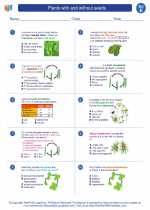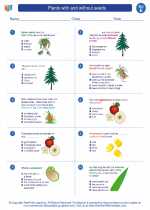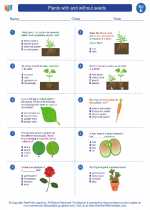Factors Influencing Wind Patterns
1. Uneven Heating of the Earth
As the sun heats the Earth, different areas heat up at different rates. This causes variances in air pressure and leads to the movement of air, resulting in wind patterns.
2. Earth's Rotation
The Coriolis effect, caused by the Earth's rotation, deflects the direction of winds. In the Northern Hemisphere, winds are deflected to the right, while in the Southern Hemisphere, they are deflected to the left.
3. Earth's Surface Features
Mountains, bodies of water, and landmasses all influence wind patterns. For example, large bodies of water can moderate the temperature of nearby areas, while mountains can cause air to rise and create specific wind patterns.
Global Wind Patterns
1. Trade Winds
Trade winds are consistent easterly winds that flow towards the equator. In the Northern Hemisphere, they originate from the northeast, while in the Southern Hemisphere, they originate from the southeast.
2. Westerlies
Westerlies are prevailing winds that blow from the west to the east in the mid-latitudes.
3. Polar Easterlies
Polar easterlies are cold winds that blow from the polar high-pressure areas towards the subpolar low-pressure areas.
4. Doldrums and Horse Latitudes
The doldrums are a region near the equator with calm winds, while the horse latitudes are regions of high pressure and calm winds at around 30 degrees north and south of the equator.
Local Wind Patterns
1. Sea and Land Breezes
During the day, the land heats up faster than the water, causing a convection current that results in a sea breeze blowing from the cooler ocean towards the warmer land. At night, the reverse occurs, and a land breeze blows from the land towards the sea.
2. Mountain and Valley Breezes
During the day, the sun heats the mountain slopes, causing air to rise and creating valley breezes. At night, the slopes cool down, and mountain breezes flow downhill into the valleys.
3. Monsoons
Monsoons are seasonal wind patterns that bring heavy rainfall. They are commonly associated with the Indian subcontinent and Southeast Asia.
Study Guide for Wind Patterns
1. What causes wind patterns?
Wind patterns are primarily caused by the uneven heating of the Earth's surface, the Coriolis effect due to the Earth's rotation, and the influence of surface features like mountains and bodies of water.
2. How do trade winds differ in the Northern and Southern Hemispheres?
In the Northern Hemisphere, trade winds originate from the northeast, while in the Southern Hemisphere, they originate from the southeast.
3. Describe the formation of sea and land breezes.
During the day, the land heats up faster than the water, causing a convection current that results in a sea breeze blowing from the cooler ocean towards the warmer land. At night, the reverse occurs, and a land breeze blows from the land towards the sea.
4. What role does the Coriolis effect play in wind patterns?
The Coriolis effect deflects the direction of winds, causing them to curve to the right in the Northern Hemisphere and to the left in the Southern Hemisphere.
5. How do monsoons differ from other wind patterns?
Monsoons are characterized by their seasonal nature, bringing heavy rainfall during specific times of the year. They are associated with specific regions like the Indian subcontinent and Southeast Asia.
.◂Science Worksheets and Study Guides Fifth Grade. Plants with and without seeds

 Worksheet/Answer key
Worksheet/Answer key
 Worksheet/Answer key
Worksheet/Answer key
 Worksheet/Answer key
Worksheet/Answer key
 Vocabulary/Answer key
Vocabulary/Answer key
 Vocabulary/Answer key
Vocabulary/Answer key
